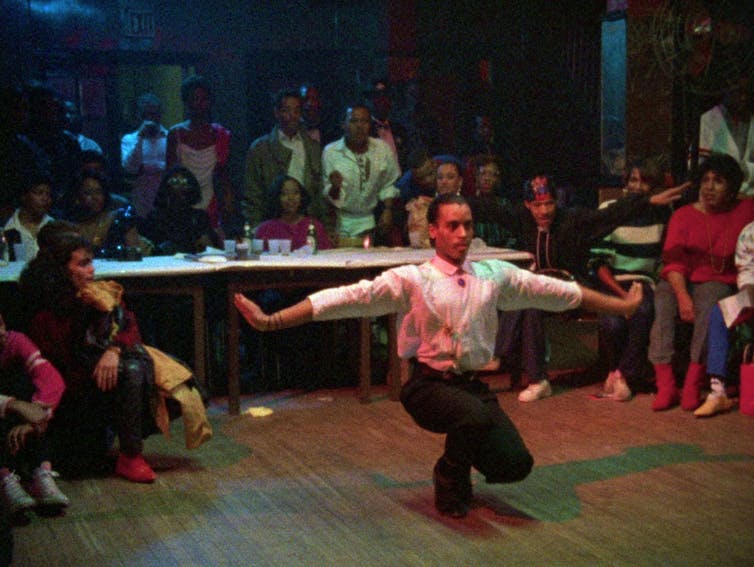They’re serving what?! How the c-word went from camp to internet mainstream
They’re serving what?! How the c-word went from camp to internet mainstream

Warning: this article contains language that some readers may find offensive.
If someone told you that you were “serving cunt”, would you be offended? Despite the inclusion of the c-word, this phrase isn’t meant as an insult or a misogynistic slur. In fact, it is quite the opposite – at least, among those in queer communities who have long used it.
The phrase describes someone displaying characteristics such as being confident, sassy or fierce. It’s a state of mind – a stance anyone can embody, regardless of gender.
And while the phrase is now part of the “internet vernacular” – to the point that it has achieved meme-level status – its origins predate digital culture. The phrase has a long history in drag, and those immersed in queer culture will recognise qualities associated with this now ubiquitous phrase.
To be evaluated as fierce, sassy or even “sickening” (another counter-intuitive compliment) is an honour – or, in drag terminology, the ultimate “slay” (something done very well). Such qualities are epitomised in RuPaul’s now iconic phrase: “Charisma, Uniqueness, Nerve and Talent” (C.U.N.T.). To snatch the crown, the queen must “serve” (display) these qualities throughout the competition.
Evidently, this is very different to the more conventional meaning of the c-word. Referring to the vulva or vagina, it is typically used as an offensive and vulgar term that reduces women to an object of sexual gratification. Frequently used as a misogynistic slur, it is often labelled as one of the most offensive words in the English language.
Arguably, the mainstreaming of this queer phrase represents could be seen as a turning point in the status of the c-word. Some social commentators have said it is a type of reclamation, whereby a term which is often weaponised against women has been appropriated, but used in deep respect as a form of protest and resistance.
Ball culture
But people aren’t just “serving cunt”. They’re “slaying the house down boots” (doing something amazing). They’re “reading people to filth” (thoroughly insulting someone), or “throwing shade” (playfully insulting someone).
They’re also labelling popstars such as Rina Sawayama and Dua Lipa “mother” (a term of endearment and admiration). And they’re “leaving no crumbs” (doing something very well).
The diffusion – or appropriation – of these phrases is symptomatic of a more widespread trend, whereby the language typically associated with drag culture has become mainstream and is now considered part of what people often label the internet vernacular.
Another popstar, Beyoncé, made frequent use of the c-word in the lyrics to her 2022 song, Pure/Honey. It also featured in the staging of her 2023 Renaissance world tour, where she performed behind a news desk labelled “KNTY 4 News”.
To understand this development, it’s important to recognise where much of the language associated with drag culture originates. Terms like “shade” and “slay”, and phrases like “read to filth”, are originally from African American Vernacular English (AAVE) – a variety of English spoken by black Americans, particularly those living in urban areas.
But how did the language of a minority ethnic group become associated with drag queens? The answer is “ballroom” or “ball culture” – an LGBTQ+ subculture formed by African American and Latino people in New York City in the late 20th century, where participants “walk” (compete) for trophies, prizes and fame at events known as balls. For the unacquainted, the 2018 drama Pose documented the ball culture in New York City in the 1980s.
As ball culture became more mainstream, so too did the language associated with this community – until it was associated with the LGBTQ+ community more generally. “Throwing shade”, “reading” and “spilling tea” (sharing gossip) were no longer confined to the ballroom
Language and appropriation
The diffusion of this language has led to intense debates about appropriation and authenticity. In 2019, I examined this issue with regard to linguistic variation on Twitter. Analysing a corpus of gay British men’s tweets, I argued they used features of AAVE such as “work dat pole gurl” and “y’all mad at hunty” (a dialect that gay men wouldn’t typically be expected to speak) not so much to claim “blackness” but to present themselves as “sassy”. By stylistically using features of AAVE, the men evoked these tropes to perform a gay identity which I called the “sassy queen”.

However, in my view, these practices are problematic because they rely on a racial imagining of the “sassy black woman” – a historical trope that reifies black women as vivacious, outspoken and lively.
Many users of the phrase “serving cunt” and other AAVE features also appear unaware of their history. For instance, in 2020, Brittany Broski (aka the internet-famous Kombucha Girl) incorrectly described AAVE terms as “stan culture” – referring to the behaviour of an extreme group of fans.
At the same time, a series of black TikTok creators have rightly rejected claims of a “new TikTok or Gen Z language”, by arguing that many of the features said to comprise this “new” variety were in fact AAVE.
So, while anyone can, in principle, “serve cunt”, it’s important to acknowledge the long history of this phrase, and many others, in drag culture – and, before that, their origins in AAVE.

Looking for something good? Cut through the noise with a carefully curated selection of the latest releases, live events and exhibitions, straight to your inbox every fortnight,
on Fridays. Sign up here.![]()
Christian Ilbury, Lecturer, Linguistics and English Language, The University of Edinburgh
This article is republished from The Conversation under a Creative Commons license. Read the original article.
Không có nhận xét nào: